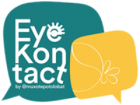A few days ago I met one of the participants in the Visual Thinking: Tools for teamwork course that Muxote Potolo Bat and Emana are offering. From that conversation, I am left with one of the gifts she gave me, without her knowing it: “I have found a better place from where I can talk, contribute and connect more and better with my clients… and also, I am also using it as an exercise to connect with myself”.
And when I listened to her (in addition to feeling the joy of knowing that the proposal I offer works and makes sense) the idea of connection, of connection at three levels, personal, team and with the process, took shape and was clearly drawn.
Visual Language (us) connects:
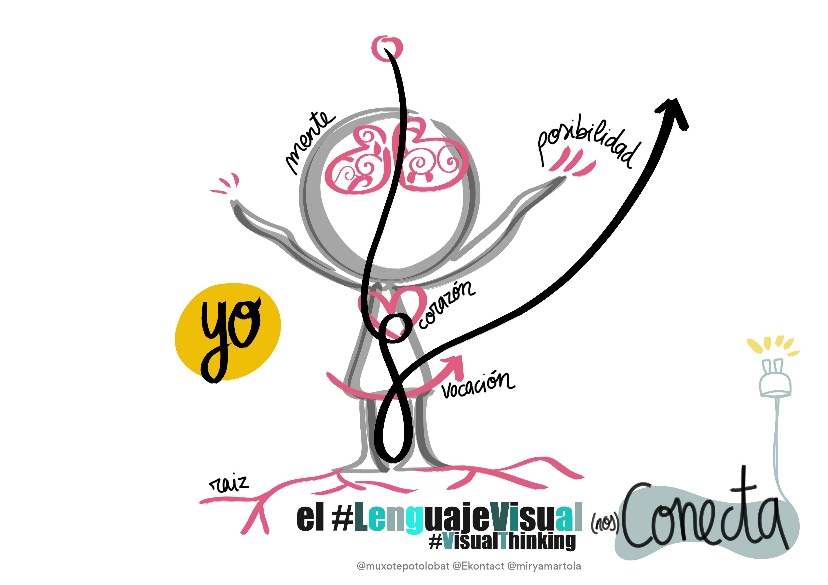
1.- It connects me. It has the ability to dialogue naturally from that innocence and naturalness that one day, for some reason, I stopped valuing. Without being exclusive to Visual Language, it does allow, directly, almost effortlessly, an “original” internal dialogue. Undoing barriers and masks that connect us with our most authentic being.
2.- It automatically connects our left hemisphere (logical, rational, structured) with our right hemisphere, crazier, more creative, more ambiguous, more groundbreaking. And from there, collective construction is much easier, combining efficiency and novelty criteria.
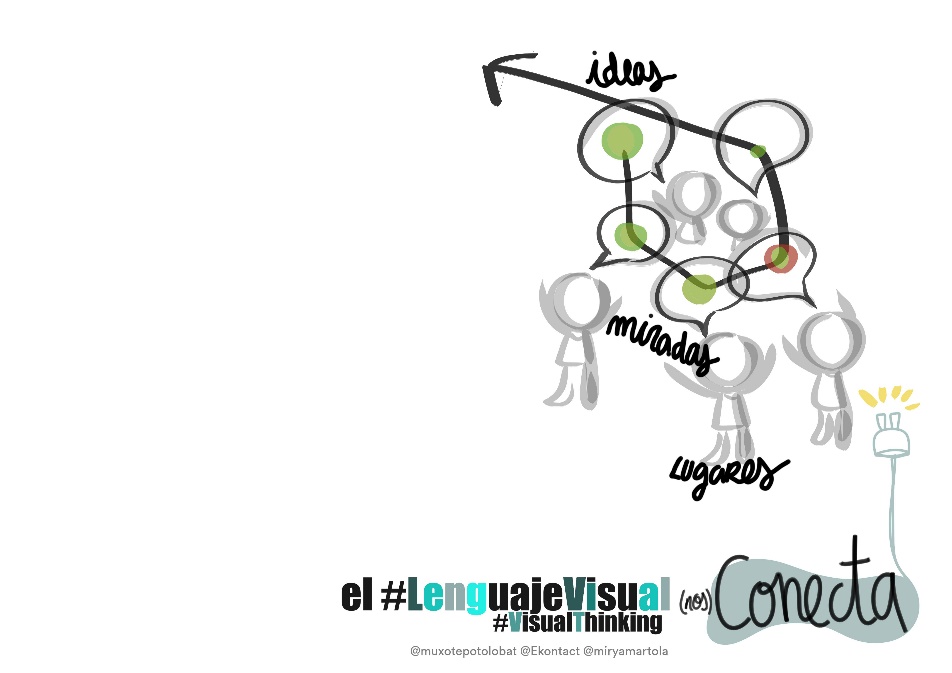
3.- #VisualThinking connects the ideas, voices and views of a team. Connect the meeting points. It visualizes them and allows us to generate the necessary connections. The likely ones. And also the unlikely ones. It allows us to explore (us). And recognize (us).
4.- Visual Language helps us to visualize the place from where we are conversing. Place it. Draw it. From there to be able to glimpse other possible, common places. Giving place, making visible, the place that each one occupies (nearness and distance, size, sharpness), and opening up to the space of the common.
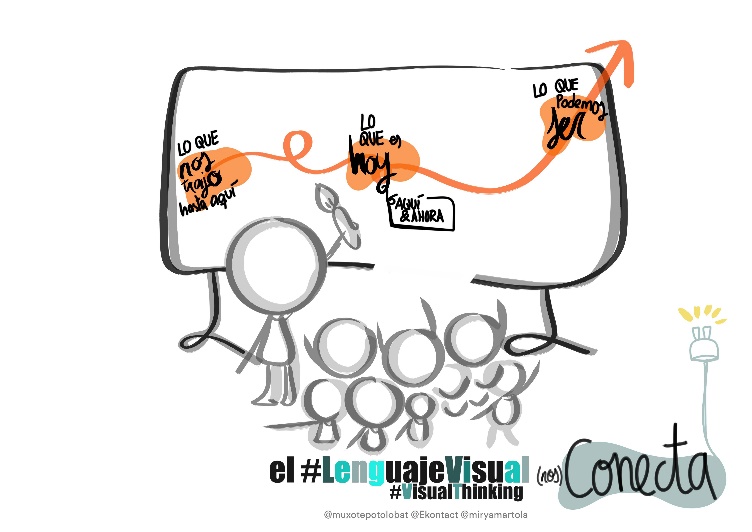
5.- Visual language (us) connects with the story, with the path that brought us here (connecting the role of each one of us in that narrative (1). Connect that past time with the present. With this Today. With that present reality that this team shares at that price instant. That “here and that now”. That we. Distill and “capture” that a unique moment that recognizes, that honors the path and that is capable of glimpsing, with simple strokes, with thick lines (and concrete nuances) the future that is coming.
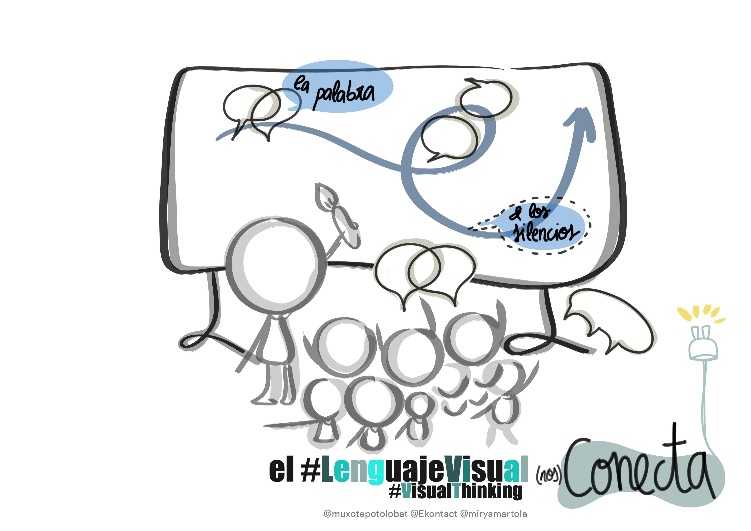
6.- One of the enormous potentialities that Visual Language offers in working with teams (and with intrapersonal work) is that it allows us to visualize and give silence its place. He who is silent does not grant. He who is silent, is silent. And silence is also a place that expresses, that offers information, that places us (by exercising silence or by listening to that silence). To be able to give its “place” to silence. look at it And being able to ask ourselves about what is behind that silence, what it is looking for, what it is contributing to…. It adds nuance and texture to the reading of that team, and its contribution to the process. Connect what is said with what is not said. What is, what appears with what is but does not appear. But both are displayed. In the dialogue between phone and form. Between full space and empty space.
Visual Language traces a path to ourselves (IN). Into our interior. Offering the possibility of connecting with our inner child. Offering us an encounter with that place, which at times, we seemed to have forgotten.
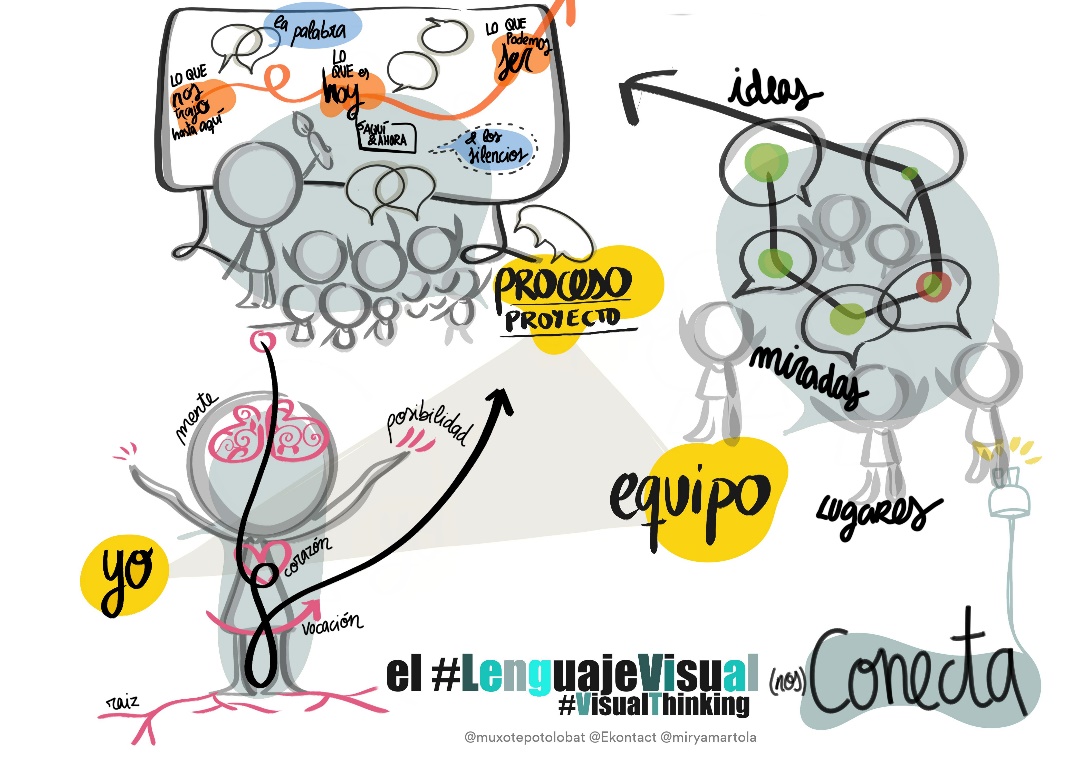
And from there, open to our fragility, showing in each stroke, each drawing a little piece of us, the connection with the people who are with us, our teams (OUT) is woven with more solid strokes, or at less more authentic.
That allows us a different interaction. Let’s call it new. Where we can talk from other places, with greater horizontality. Offering the possibility, to draw the connections between the different ideas that sprout in the space.
And from there, connect the dots along the way. The past, what brought us here. Until this here and this now in which we are and do. Throwing traces towards that future that emerges. Lines that will allow us to continue advancing. On a shared path (discussed, shared and drawn).
Visual Thinking, as a Language, is a powerful connector. That “joins the dots” of our own ideas, projects and challenges. That glimpses sequence and path to connect with our teams, our own individual identity as well as with each of the ideas that arise. Recognizing that precise moment of reality and tracing (new) processes and dynamics that may emerge.
Therefore, the question is not, but what if I don’t know how to draw? The question is… do I want to connect more and better with who I am? With what we are as a team? Connect from who we are as a team, with what we do together? Connect the present (this today, this here and this now) with the future that is already coming?
Storytelling, from the #VisualLanguage is called the sequence of drawings and words that builds a story or explains the sequence of a matter or situation.
